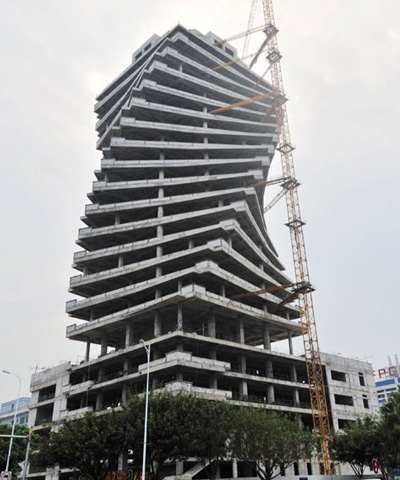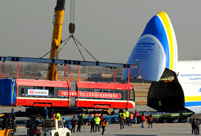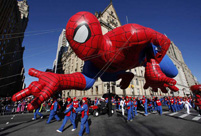 |
| Twisted building in Xiamen (Photo/CNS) |
Modernist trend in architecture is all-pervasive
As a new form of architecture, modernism began to gain popularity after World War II, and was adopted by many architects. Architects started to release their passions and liberate their ideas, and their designs were not only functional but also stylish. A series of weird, strange, and irregular-shaped buildings began to sprout in modern cities.
When Chinese tradition meets modern architecture
We do not see too many success stories when buildings attempt to combine modern architecture and Chinese traditional design, because Chinese architecture has very different features from modern architecture. For example, traditional Chinese buildings emphasize articulation and bilateral symmetry, but western modern architecture encourages imbalance. Classical Chinese buildings focus on width, while western styles tend to build in height and depth.
If Chinese architects merely copy western styles or ideas without a little thought or understanding, the Chinese public are likely to feel uncomfortable and reject them, just as people have responded negatively to the Xiamen twist building; and if architects leap straight from ancient Chinese to modern western, they will miss an important step in better representing Chinese culture.


 Heavy cargo flights taking off
Heavy cargo flights taking off In pictures: PLA's digital equipment
In pictures: PLA's digital equipment  Americans mark Thanksgiving Day with parades
Americans mark Thanksgiving Day with parades Love searching stories in cities
Love searching stories in cities  Shanghai shrouded in heavy fog
Shanghai shrouded in heavy fog Office ladies receive ‘devil’ training in mud
Office ladies receive ‘devil’ training in mud Changes in Chinese dancing culture
Changes in Chinese dancing culture  Highlight of Mr Bodybuilding and Miss Bikini Contest
Highlight of Mr Bodybuilding and Miss Bikini Contest  Picturesque scenery of Huanglong, NW China
Picturesque scenery of Huanglong, NW China China's moon rover, lander
China's moon rover, lander Spring City Kunming witnesses snowfall
Spring City Kunming witnesses snowfall Citizens rush to buy cars
Citizens rush to buy cars  Life in an ancient academy
Life in an ancient academy Best photos of the week
Best photos of the week White-collars, black eyes
White-collars, black eyesDay|Week|Month